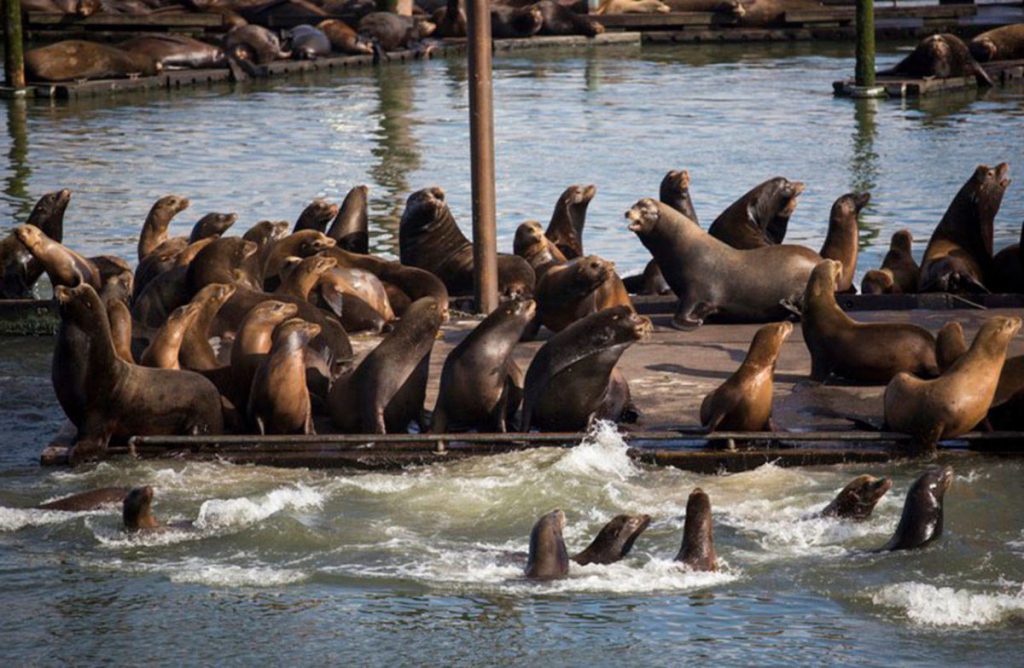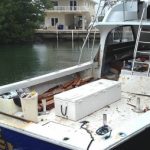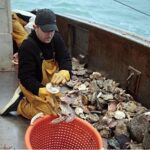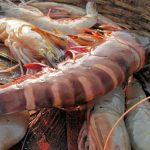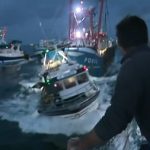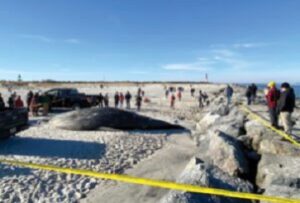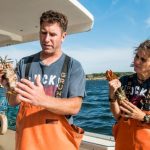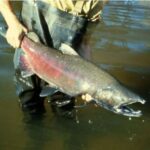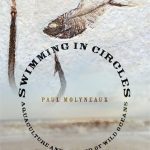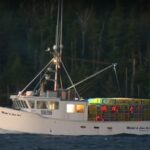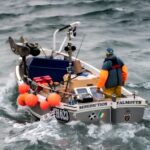Tag Archives: marine mammal
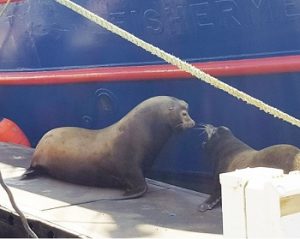
Yaquina Bay: California Sea Lion breeding season is heating up!
As their breeding season approaches, the mostly male sea lions of Yaquina Bay are growing hormonal and more aggressive as they prepare to head south for courtship. The pinnipeds that crowd the docks of Newport’s harbor are California sea lions. The typical adult male is close to 8 feet long and weighs between 700 pounds and a half ton, while adult females are usually 6 feet long and weigh less than half as much. The Steller sea lion is also found in the area but tends to stay away from harbors, favoring to haul out on sea rocks and buoys offshore.,,, The Marine Mammal Protection Act makes it illegal to hunt, capture, kill or harass sea lions, with limited exceptions for the deterrent hazing of individual nuisance animals. >click to read< 12:01
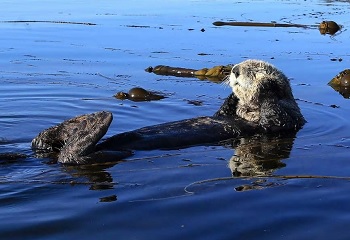
As the marine mammal takes a bite out of the fishing industry, A modest proposal for hunting sea otters
Phil Doherty doesn’t think sea otters are cute. Sure, he can see why tourists might get a kick out of watching the fuzzy critters reclining in waves with clams on their bellies, fixing to chow down. But to Doherty, co-director of the Southeast Alaska Regional Dive Fisheries Association and the commercial fisherman he represents, those cuddly otters are eating their bottom line. >click to read< 15:07

Managing Coorong seals could provide local jobs, say Indigenous elders
The number of seals in the region has increased dramatically in the past five years, and many fishermen have called for a cull. But Indigenous elders in the Lower Lakes and Coorong region said there could be other ways to manage the seals.,,, A recent senate inquiry recommended culling overabundant species, such as corellas and kangaroos, when the pests’ impact on the community warrants it. But South Australian Environment Minister David Spiers said in the case of the Coorong seals, more research was needed before the State Government would consider a cull. >click to read< 16:24
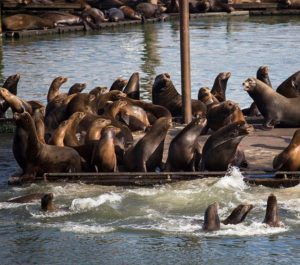
Protected sea lions causing trouble at Northwest ports
A big rebound in the sea lion population along the West Coast in recent years has created a constant battle to wrangle the protected animals. They’re smart and fun to watch from a safe distance, but also noisy, smelly and proving to be a headache for some coastal marinas. “It’s a free zoo kind of, just don’t pet ‘em!” observed Dennis Craig of Olympia,,, The flip side of these flippered fish fiends can be seen in the mounting bill to the marina, including the cost of busted docks, broken electric stanchions and lost business. >click to read<09:05
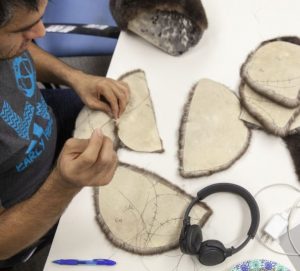
Otterskin sewing workshops promote ‘sustainable cottage industry’ in coastal Alaska
A series of workshops in communities around Southeast Alaska aims to expand the practice of traditional Alaska Native skin-sewing with seal and sea otter fur.,,, In the last few decades, things have been looking up for sea otters in Southeast Alaska. The last official count put their number well over 25,000 and growing. “It’s a very thriving population growing probably 10 to 12 percent a year,” Lee Kadinger said. “The otters are starting to show up more around Ketchikan now, so we got to start getting rid of them. They kill all our crab, and I love crab,” Leask said. “There’s got to be a little bit of population control.” >click to read<11:56
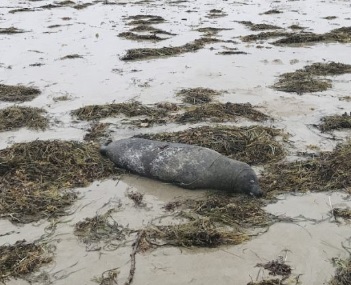
Decades of chemical pollution suspected in Maine’s seal die-off
As the number of dead and stranded seals washing up on southern Maine beaches rises by the day, researchers are linking the sudden die-off to decades of chemical pollution that made the seal population vulnerable to toxins and disease.,,, In the past week, volunteers responded to 100 dead seals on Maine beaches south of Portland and in Casco Bay, said Lynda Doughty, the group’s executive director. The phone has been ringing off the hook, and on Friday afternoon volunteers were clearing a backlog of animal reports. Rescuers reported 179 dead seals in Maine since the beginning of July and another 51 dead in New Hampshire, according to the agency>click to read<13:44
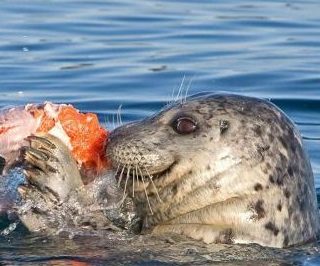
Seals a major factor in fewer salmon
Re: “Ottawa cutting chinook catch to save orcas,”>click to read< May 25. The article concerning the decline of chinook salmon and orca populations fails to mention the influence of seals. According to the University of British Columbia marine mammal research unit, seal numbers in the Strait of Georgia increased from about 5,000 to more than 40,000 from 1970 to 2008, and now kill about half of the juvenile coho and chinook. Reducing the salmon sport catch without addressing the exploding numbers of seals will not help the orcas much. >click to read<17:53
Taranaki fisherman slams government data on Maui’s dolphin
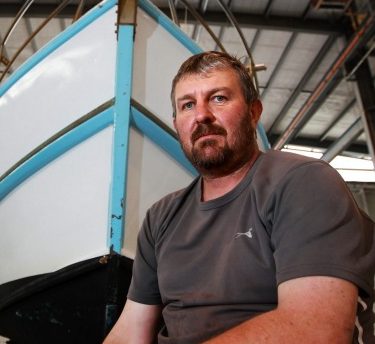 A commercial fisherman in Taranaki has rubbished new government data which shows increased Maui’s dolphin numbers. The research – conducted by the Department of Conservation and the Ministry of Primary Industries – found there are approximately 63 adults left in the species whereas there was previously thought to have been only 55. New Plymouth fisherman Rob Ansley said claims by minister Nathan Guy that set net restrictions were having a positive effect on Maui’s numbers was “a load of s**t”. Ansley said government observers aboard fishing boats in Taranaki waters had not seen a single Maui’s dolphin since they started observing in 2012. “How can it be working if no one has ever had a confirmed sighting of these dolphins,” he said. According to the Department of Conservation the last confirmed sighting of a Maui’s dolphin in Taranaki was at Port Taranaki on January 18, 2014 while the last sighting in New Zealand was on March 20, 2016 off Muriwai beach in Auckland. Read the story here 15:28
A commercial fisherman in Taranaki has rubbished new government data which shows increased Maui’s dolphin numbers. The research – conducted by the Department of Conservation and the Ministry of Primary Industries – found there are approximately 63 adults left in the species whereas there was previously thought to have been only 55. New Plymouth fisherman Rob Ansley said claims by minister Nathan Guy that set net restrictions were having a positive effect on Maui’s numbers was “a load of s**t”. Ansley said government observers aboard fishing boats in Taranaki waters had not seen a single Maui’s dolphin since they started observing in 2012. “How can it be working if no one has ever had a confirmed sighting of these dolphins,” he said. According to the Department of Conservation the last confirmed sighting of a Maui’s dolphin in Taranaki was at Port Taranaki on January 18, 2014 while the last sighting in New Zealand was on March 20, 2016 off Muriwai beach in Auckland. Read the story here 15:28
Recovery of Marine Mammal predators causes unexpected conservation challenges
 In the paper, published in the journal Conservation Letters, scientists explored the effects of these recovering predator populations on their home ecosystems, outlining three major unintended conflicts that have resulted. In the Pacific Northwest the comeback of California sea lions and killer whales, as well as Pacific harbor seals (Phoca vitulina), all protected under the MMPA, has increased the animals’ competition with humans for fish. Furthermore, all three predators feed on the ESA-protected Chinook salmon (Oncorhynchus tshawytscha), whose populations are declining. And competition for fish among the predators could adversely affect them all. Read the rest here 10:40
In the paper, published in the journal Conservation Letters, scientists explored the effects of these recovering predator populations on their home ecosystems, outlining three major unintended conflicts that have resulted. In the Pacific Northwest the comeback of California sea lions and killer whales, as well as Pacific harbor seals (Phoca vitulina), all protected under the MMPA, has increased the animals’ competition with humans for fish. Furthermore, all three predators feed on the ESA-protected Chinook salmon (Oncorhynchus tshawytscha), whose populations are declining. And competition for fish among the predators could adversely affect them all. Read the rest here 10:40NOAA recognizes Predator/Prey Relationship of exploding populations of Marine Mammal Populations and fish!
 The study by scientists from NOAA Northwest Fisheries Science Center and the University of Washington examines recovering predator populations along the West Coast of the United States and in the Greater Yellowstone ecosystem, and the conflicts surrounding them. The study was published today in the journal Conservation Letters. In the Pacific Northwest, for example, California sea lions that have increased under the Marine Mammal Protection Act have increasingly preyed on endangered salmon.,, Read the rest here 16:01
The study by scientists from NOAA Northwest Fisheries Science Center and the University of Washington examines recovering predator populations along the West Coast of the United States and in the Greater Yellowstone ecosystem, and the conflicts surrounding them. The study was published today in the journal Conservation Letters. In the Pacific Northwest, for example, California sea lions that have increased under the Marine Mammal Protection Act have increasingly preyed on endangered salmon.,, Read the rest here 16:01
Los Angeles authorities seek kidnapped sea lion pup
 Authorities in California said they are searching for a sea lion pup kidnapped by a group of people on a Los Angeles beach. The Los Angeles Police Department said a witness told investigators two men and two women were seen harassing a pair of pups at Dockweiler State Beach about 3:30 a.m. Sunday and the group allegedly threw objects at the animals, including trash and cinder blocks. Read the rest here 08:07
Authorities in California said they are searching for a sea lion pup kidnapped by a group of people on a Los Angeles beach. The Los Angeles Police Department said a witness told investigators two men and two women were seen harassing a pair of pups at Dockweiler State Beach about 3:30 a.m. Sunday and the group allegedly threw objects at the animals, including trash and cinder blocks. Read the rest here 08:07
Marine Corps to comply with marine mammal protection
 CHERRY POINT -The Marine Corps has requested a five-year authorization from National Marine Fisheries for incidental deaths of bottlenose dolphins during training at Brant Island Bombing Target and Piney Island Bombing Range. Read more here 21:27
CHERRY POINT -The Marine Corps has requested a five-year authorization from National Marine Fisheries for incidental deaths of bottlenose dolphins during training at Brant Island Bombing Target and Piney Island Bombing Range. Read more here 21:27
US Navy has rejected recommendations by the California Coastal Commission for its use of sonar and underwater explosives
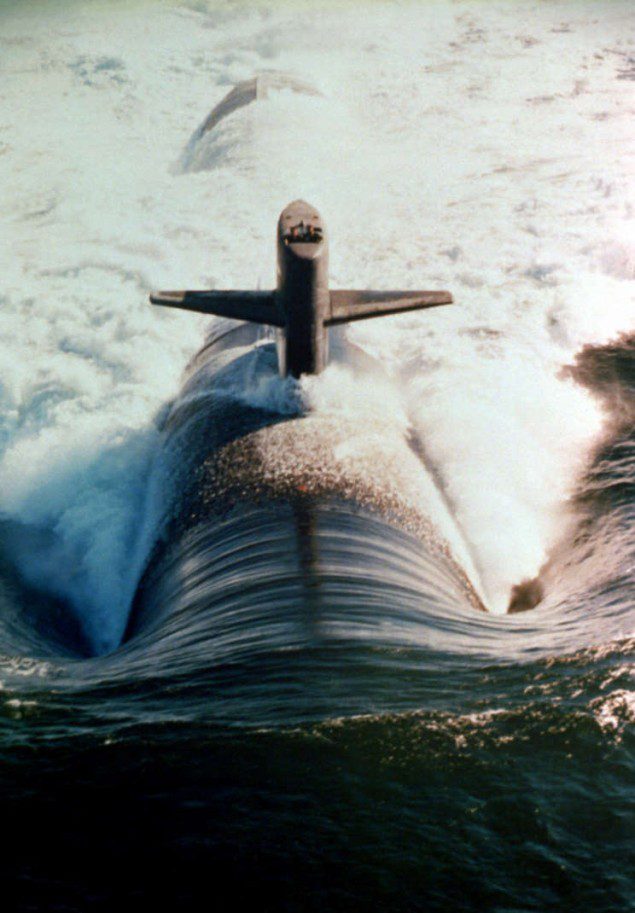
In a letter July 31, the Navy said it disagreed with the commission’s determination that naval training plans did not include enough information to conclude the overall marine mammal count isn’t affected by sonar technology or by detonations at sea. The Navy is applying for a five-year renewal of its federal marine permit to conduct training over a huge swath of ocean between Hawaii and Southern California. more@utsandiego 08:24






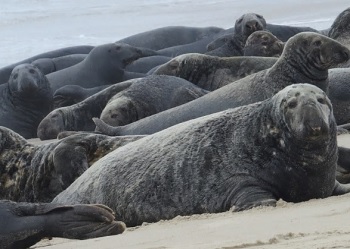

 People in Marina del Rey, Calif., were surprised when a sea lion pup wandered into their apartment complex. But getting help for Walter when he was spotted last week wasn’t easy. Nearly 1,000 have washed ashore so far this year. The warmer water could have affected the availability of prey to the sea lions. Another possibility is “the sea lion population is reaching carrying capacity.
People in Marina del Rey, Calif., were surprised when a sea lion pup wandered into their apartment complex. But getting help for Walter when he was spotted last week wasn’t easy. Nearly 1,000 have washed ashore so far this year. The warmer water could have affected the availability of prey to the sea lions. Another possibility is “the sea lion population is reaching carrying capacity. 




























